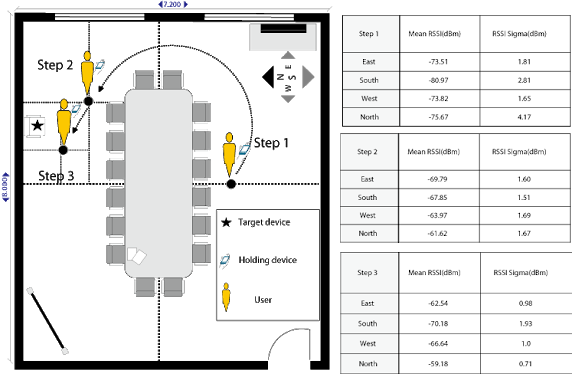
Indoor localization of smart hand-held devices is essential for location based services of pervasive applications. Previous research mainly focuses on exploring wireless signal fingerprints for this purpose, and several shortcomings need to be addressed first before real-world usage, e.g., demanding a large number of APs or labor-intensive site survey. In this paper, through a systematic empirical study, we first gain in-depth understandings of Bluetooth characteristics, i.e., the impact of various factors such as distance, orientation, and obstacles on the Bluetooth RSSI (Received Signal Strength Indicator). Then, a novel localization model is built to describe the relationship between RSSI and the device location. On this basis, we present MLDB, an indoor localization scheme that leverages user motions to iteratively shrink the search space to locate the target device. MLDB has been prototyped and evaluated in several real-world scenarios. Extensive experiments show that MLDB is efficient in terms of localization accuracy, searching time and energy consumption.
Publications:
*Yu Gu and Fuji Ren, Energy-efficient Indoor Localization of Smart Hand-held Devices Using Bluetooth, IEEE ACCESS Journal, vol.3, pp.1450-1461, 2015. (IF 2016: 1.249)pdf
*Yu Gu, Lianghu Quan, Fuji Ren and Jie Li. Fast Indoor Localization of Smart Hand-held Devices Using Bluetooth, IEEE MSN 2014, Maui, Hawaii, USA, Dec 19-21, 2014.pdf



